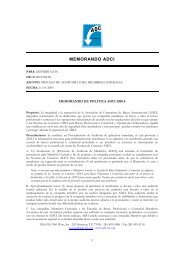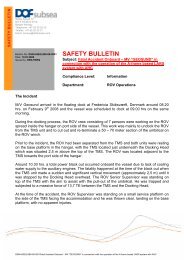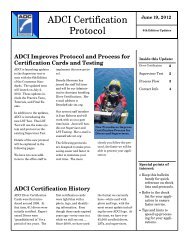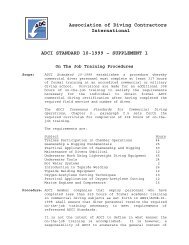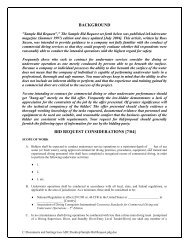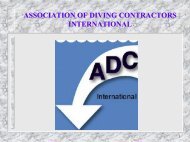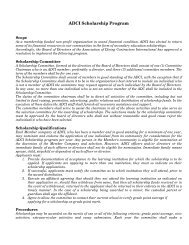DIRECTIVE NUMBER: CPL 02-00-151 EFFECTIVE DATE ... - OSHA
DIRECTIVE NUMBER: CPL 02-00-151 EFFECTIVE DATE ... - OSHA
DIRECTIVE NUMBER: CPL 02-00-151 EFFECTIVE DATE ... - OSHA
You also want an ePaper? Increase the reach of your titles
YUMPU automatically turns print PDFs into web optimized ePapers that Google loves.
NOTE: Appendix C of this instruction provides additional discussion<br />
and information regarding exclusions and exemptions from <strong>OSHA</strong>’s<br />
commercial diving standard.<br />
6. Federal Agency Coverage and Application.<br />
a. U.S. Coast Guard.<br />
The U.S. Coast Guard has prescribed diving regulations under 46 CFR,<br />
Chapter I, Part 197, Subpart B – Commercial Diving Operations. U.S.<br />
Coast Guard regulations state that they apply to commercial diving<br />
operations taking place: at any deepwater port or the safety zone thereof as<br />
specified by 33 CFR Part 150 (see NOTE below); from any artificial island,<br />
installation, or other device on the Outer Continental Shelf (OCS) and the<br />
waters adjacent thereto as defined in 33 CFR Part 147, or otherwise related<br />
to activities on the OCS; from all vessels with a valid certificate of<br />
inspection (COI) issued by the U.S. Coast Guard (i.e., “inspected” vessels),<br />
including mobile offshore drilling units (MODUs) regardless of their<br />
geographic location; from any vessel connected with a deepwater port or<br />
within the deepwater port safety zone; and from any vessel engaged in<br />
activities related to the OCS.<br />
NOTE: “Deepwater port” means any fixed or floating man-made structure<br />
other than a vessel, or any group of structures, located beyond State<br />
territorial seas, and that are used or intended for use as a port or terminal for<br />
the transportation, storage, or further handling of oil or natural gas for<br />
transportation to any State, and for other uses including the transportation of<br />
oil or natural gas from the United States’ Outer Continental Shelf. The term<br />
includes all components and equipment, including pipelines, pumping<br />
stations, service platforms, buoys, mooring lines, and similar facilities to the<br />
extent they are located seaward of the general coastline. In the case of<br />
natural gas, the term includes all components and equipment, including<br />
pipelines, pumping or compressor stations, service platforms, buoys,<br />
mooring lines, and similar facilities, to the extent that they are located<br />
seaward of the general coastline and do not include interconnecting<br />
facilities. The local U.S. Coast Guard Office can provide detailed guidance<br />
regarding deepwater ports, the associated safety zones, and the identification<br />
of related components and equipment (see http://homeport.uscg.mil or<br />
USCG Phonebook).<br />
b. Other Federal Agencies.<br />
The Department of the Navy (DON) requires compliance with the U.S.<br />
Navy Diving Manual (Revision 6). For civilian employees, this manual<br />
includes additional provisions which provide protection equivalent to the<br />
<strong>OSHA</strong> diving standard. DON civilian divers are identified as all permanent<br />
DON employees who have been formally trained at an approved U.S. Navy<br />
diving school. Commercial divers contracted by DON who are not<br />
9



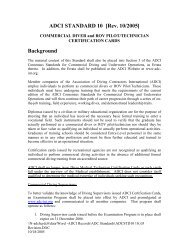
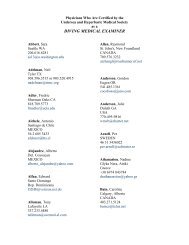
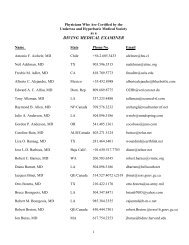
![SOLICITUD MEMBRESIA ASOCIADO [Rev 06/08] - Association of ...](https://img.yumpu.com/48291988/1/190x245/solicitud-membresia-asociado-rev-06-08-association-of-.jpg?quality=85)

